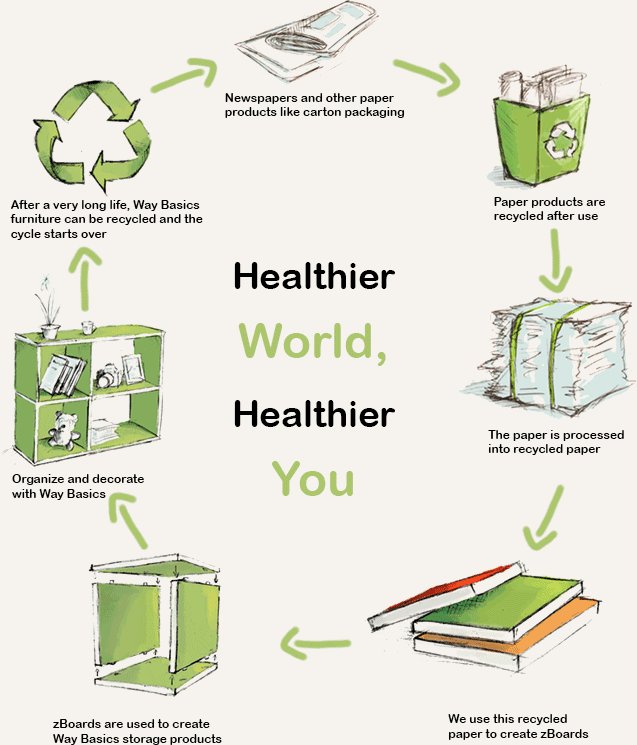Discover Water-Resistant Eco-Friendly Furniture
Today we discuss Discover Water-Resistant Eco-Friendly Furniture. If you’re searching for environmentally friendly furniture that can resist water stains and damage, you’ve come to the right spot! We have the ideal answer to your furniture concerns. It can be difficult to find sustainable options that also repel water, but fret not, we have you covered.
In this guide, we will lead you through the journey of discovering eco-friendly furniture that not only appears fantastic but can also endure water stains and damage. So, if you’re prepared to enhance your furniture collection while reducing your impact on the environment, continue reading!
Discover Water-Resistant Eco-Friendly Furniture:
Understanding the Importance of Eco-Friendly Furniture:
Opting for eco-friendly furniture means supporting sustainability and using non-toxic materials that are safe for health and the environment. These pieces are also durable and resistant to water stains and damage, ensuring longevity.
The Benefits of Eco-Friendly Furniture:
Eco-friendly furniture is crafted from sustainable materials like reclaimed wood, bamboo, or recycled plastic. These materials help lower the carbon footprint and decrease the need for new resources. Moreover, eco-friendly furniture often features water-resistant finishes or coatings that shield it from stains and moisture-related damage.
Some of the key benefits of eco-friendly furniture include:
- Reduced environmental impact
- Healthier indoor air quality
- Durable and long-lasting
- Water-resistant properties
- Unique and stylish designs
Considerations When Buying Eco-Friendly Furniture:
While shopping for eco-friendly furniture, there are a few important factors to consider:
- Materials: Look for furniture made from sustainable materials such as reclaimed wood, bamboo, or recycled plastic.
- Certifications: Check for certifications like Forest Stewardship Council (FSC) or GREENGUARD that ensure the furniture meets specific environmental and health standards.
- Finishes: Opt for furniture with water-resistant finishes or coatings that provide protection against water stains and damage.
- Manufacturing processes: Research the company’s manufacturing practices to ensure they align with sustainable principles.
- Reusability and recyclability: Consider furniture that can be easily disassembled, repaired, or recycled at the end of its lifespan.
Exploring Water-Resistant Materials and Finishes:
Investing in furniture with water-resistant materials and finishes is crucial to safeguarding your furniture against water stains and damage. Let’s take a closer look at some of the popular options available:
Water-Resistant Materials
- Teak: Teak is a tropical hardwood known for its natural water resistance. Its dense composition and natural oils make it highly resistant to water damage.
- HDPE (High-Density Polyethylene): HDPE is a plastic material that is not only durable but also water-resistant. It is often used in outdoor furniture due to its ability to withstand various weather conditions.
- Aluminum: Aluminum furniture is lightweight, sturdy, and resistant to rust and water damage. It is commonly used in outdoor settings due to its durability.
- Concrete: Concrete furniture, when properly sealed, can be highly resistant to water stains and damage. Its robust nature makes it suitable for both indoor and outdoor use.
Water-Resistant Finishes:
- Polyurethane: Polyurethane is a popular water-resistant finish that creates a protective layer on the furniture’s surface. It offers excellent resistance against water stains and enhances durability.
- Wax: Wax finishes provide a natural and water-resistant coating. Regular reapplication of wax can help maintain the furniture’s resistance to water damage.
- Varnish: Varnish is a durable and water-resistant finish that adds a glossy or matte protective layer to furniture surfaces. It is commonly used on wooden furniture.
- Epoxy: Epoxy coatings are highly water-resistant and create a seamless, protective layer on furniture surfaces. They are often used on concrete furniture.
Finding Eco-Friendly Furniture Retailers:
When searching for eco-friendly furniture that is resistant to water stains and damage, it’s important to find reputable retailers specializing in sustainable and high-quality products. Here are some ways to find these retailers:
Online Research
- Search for eco-friendly furniture retailers: Use search engines to find online retailers that specifically focus on eco-friendly furniture and offer water-resistant options.
- Read customer reviews: Look for reviews or testimonials from previous customers to gauge the quality and durability of the furniture offered by different retailers.
- Check certifications: Look for retailers that carry furniture with certifications like FSC or GREENGUARD, indicating their commitment to sustainable practices.
- Compare prices and warranties: Compare prices and warranty policies among different retailers to ensure you find the best value for your money.
Local Sustainable Furniture Stores:
- Search for local stores: Look for furniture stores in your area that specialize in eco-friendly and sustainable products.
- Visit showrooms: Visit the showrooms to examine the furniture in person and speak with knowledgeable staff about water-resistant options.
- Inquire about materials and finishes: Ask specific questions about the materials and finishes used in the furniture to ensure they meet your water-resistant requirements.
- Explore customization options: Some stores may offer customization services, allowing you to select water-resistant materials and finishes according to your preferences.
Maintaining and Protecting Your Eco-Friendly Furniture:
To maximize the lifespan of your eco-friendly furniture and maintain its resistance to water stains and damage, proper care and maintenance are essential. Follow these tips to ensure your furniture stays in top condition:
Regular Cleaning
- Dust and vacuum: Regularly remove dust and debris from your furniture with a soft brush or vacuum cleaner to prevent buildup that can lead to stains or damage.
- Gentle cleaning solutions: Use mild, eco-friendly cleaning solutions and a soft cloth to clean your furniture. Avoid harsh chemicals that may damage the finishes or materials.
- Spot cleaning: Address spills and stains immediately by gently blotting them with a clean cloth. Avoid rubbing, as it can spread the stain and damage the furniture.
Protective Measures
- Coasters and placemats: Use coasters, placemats, or tablecloths to protect surfaces from water rings and spills.
- Furniture covers: Cover outdoor furniture when not in use to protect it from extended exposure to rain or harsh weather conditions.
- Apply protective treatments: Reapply water-resistant treatments or finishes as recommended to maintain the furniture’s resistance to water stains and damage.
Making Informed Purchase Decisions:
While shopping for eco-friendly furniture resistant to water stains and damage, it’s important to consider additional factors that align with your lifestyle and preferences:
Style and Design:
Choose furniture that matches your style and complements your existing decor. Fortunately, eco-friendly furniture comes in a wide range of styles, from modern to rustic, ensuring you find something that suits your taste.
Functionality and Versatility:
Consider how you plan to use the furniture and whether it serves your specific needs. Look for versatile pieces that can adapt to different settings or be easily moved around if necessary.
Budget and Value:
Set a budget for your furniture purchase and compare prices among different retailers. Evaluate the quality, durability, and warranty of the furniture to ensure it provides long-term value for your investment.
Social and Environmental Responsibility:
Support furniture manufacturers and retailers that prioritize sustainable practices and contribute to social and environmental causes. Look for certifications and transparent information about their supply chain and sourcing.
Faqs for Water-Resistant Eco-Friendly Furniture:
When searching for water-resistant eco-friendly furniture, look for materials such as teak, bamboo, reclaimed wood, or recycled plastic. These materials are known to be durable and resistant to water damage.
Yes, you should look for certifications such as Forest Stewardship Council (FSC) certification or Sustainable Forest Initiative (SFI) certification. These labels ensure that the furniture has been sourced from responsibly managed forests.
In some cases, you can apply a water-resistant seal or finish to eco-friendly furniture to enhance its resistance to water stains. However, it’s essential to choose environmentally friendly and non-toxic sealants or finishes.
You can find eco-friendly furniture that is resistant to water stains and damage at specialty eco-friendly furniture stores, home decor stores that have a sustainable products section, or through online retailers that specialize in eco-friendly furniture.
To maintain the water-resistant properties of your eco-friendly furniture, it’s essential to clean it regularly with a mild soap and water solution, avoiding harsh chemicals. Additionally, you should avoid placing the furniture in direct sunlight or extreme weather conditions that could degrade its water-resistant properties.
Many manufacturers offer warranties or guarantees for their water-resistant eco-friendly furniture. It’s recommended to check the specific warranty information provided by the manufacturer or retailer before making a purchase.
Final Thoughts
In conclusion, finding eco-friendly furniture that is resistant to water stains and damage is essential for sustainable living. By considering materials such as recycled wood or bamboo, and opting for water-resistant finishes or coatings, consumers can make eco-conscious choices without compromising on durability. Furthermore, exploring innovative technologies like nanocoatings can provide added protection against water damage. With increased awareness and availability of eco-friendly options, it is now easier than ever to find furniture that aligns with both aesthetic preferences and environmental values. So, start transforming your living space with eco-friendly, water-resistant furniture today!

